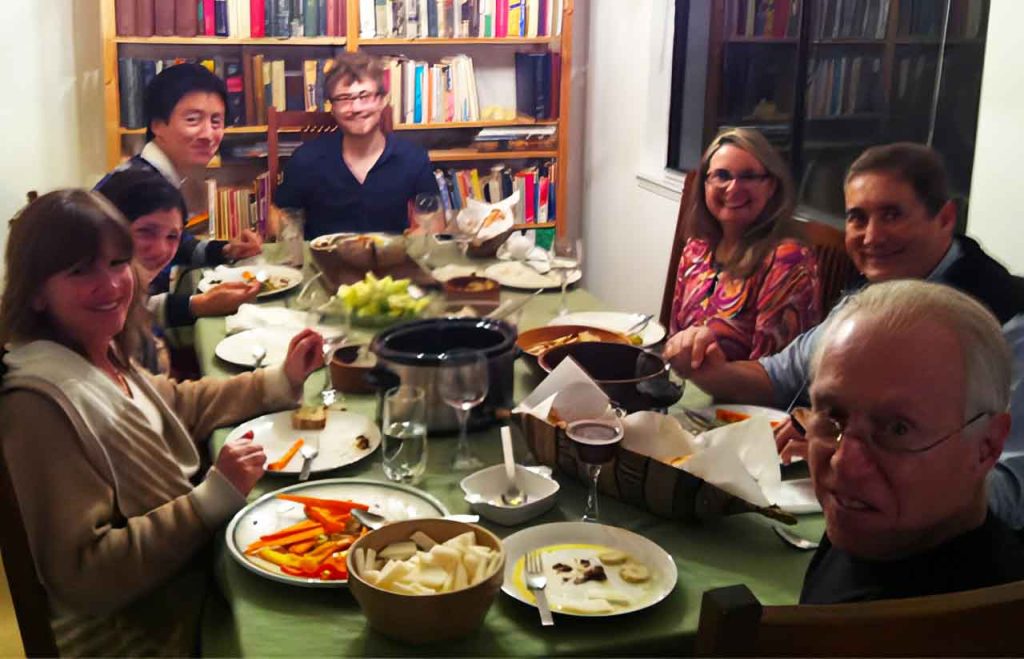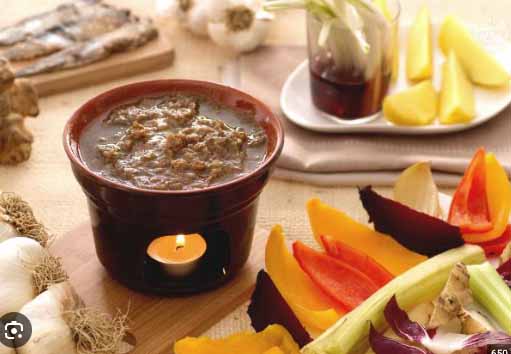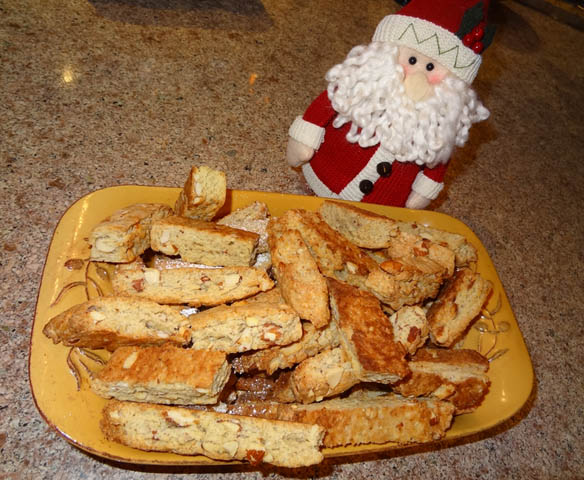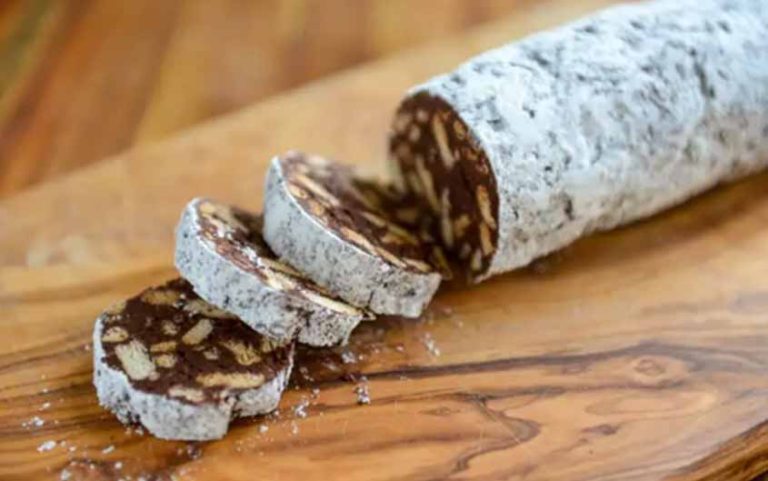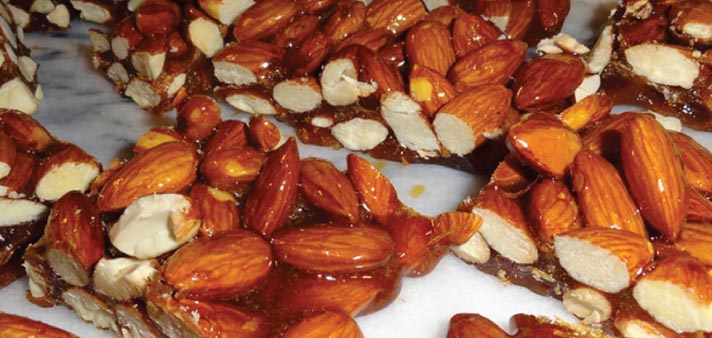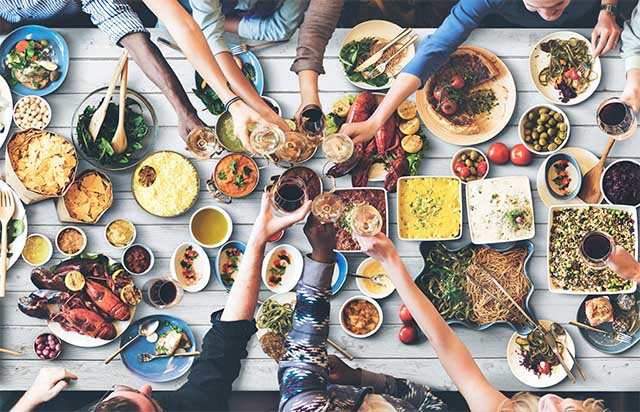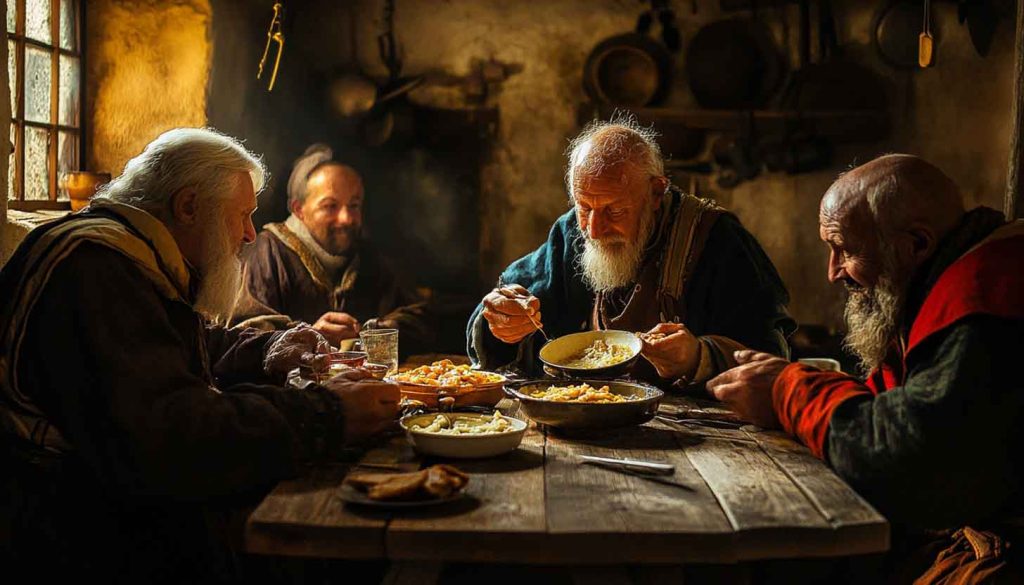
Bagna Cauda: Una delizia medievale del Piemonte
Bagna Cauda: A Tasty Dip from Piedmont
L’origine contadina di una salsa conviviale
The rustic origins of a convivial sauce
Come si trascorre una serata perfetta con gli amici? Facendo un bagno caldo, ovviamente! Non in una vasca idromassaggio, però—anche se l’idea ha i suoi meriti—ma preparando una “bagna cauda.” Il nome, che in piemontese significa letteralmente “bagno caldo,” si riferisce a una salsa a base di aglio, olio d’oliva e acciughe, servita con verdure crude o cotte. Ma la bagna cauda non è solo una semplice salsa: è un vero e proprio rituale, simbolo di felicità, amicizia e convivialità.
How does one spend a perfect evening with friends? By taking a hot bath, of course! But not in a hot tub—although that has its merits—but by preparing “bagna cauda.” The name, which literally means “hot bath” in the Piemontese dialect, refers to a sauce made of garlic, olive oil, and anchovies, served with raw or cooked vegetables. Yet, bagna cauda is much more than just a simple dip—it’s a ritual, a symbol of happiness, friendship, and conviviality.
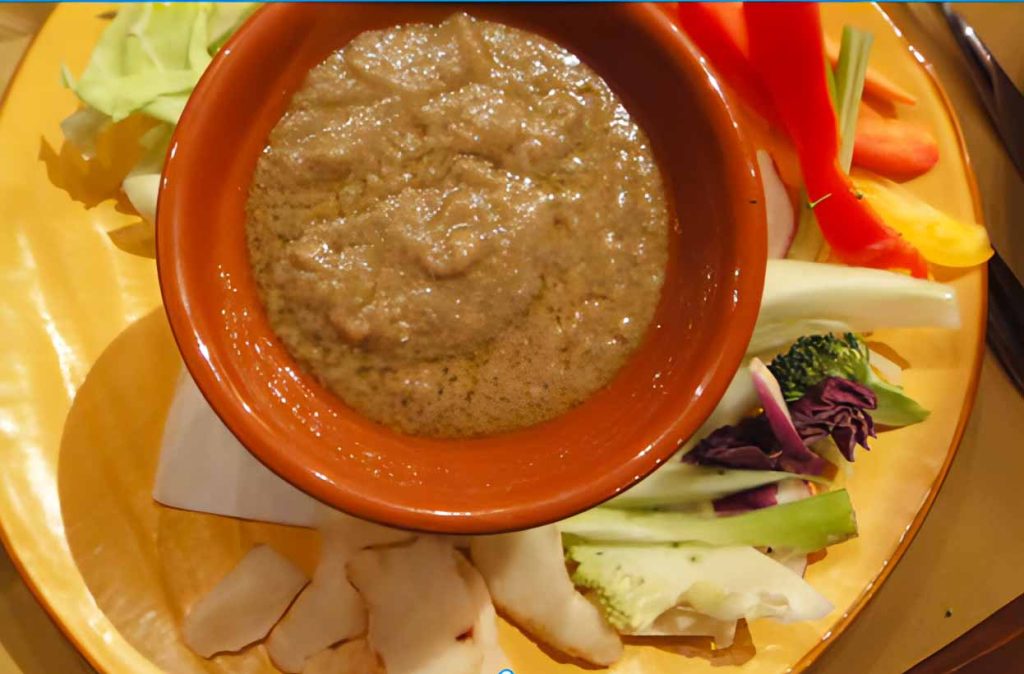
Un piatto nato tra i vigneti medievali
A dish born among medieval vineyards
La bagna cauda nasce nel Medioevo come cibo povero, un piatto dei contadini che cercavano di combattere il freddo. I nobili, invece, la disprezzavano per l’intenso aroma d’aglio che lasciava l’alito poco piacevole—una preoccupazione comprensibile, considerando l’assenza di filo interdentale all’epoca. Secondo le testimonianze storiche, questo piatto ha avuto origine nel sud del Piemonte, tra l’Astigiano, il Monferrato, le Langhe e il Roero, dove i vignaioli festeggiavano il primo assaggio del vino novello a novembre. Da allora, il rito di sedersi attorno a un tavolo con al centro “il fojot,” il contenitore in terracotta che mantiene la salsa calda, è sopravvissuto e si trova tuttora nei menù di molte osterie piemontesi.
Bagna cauda originated in the Middle Ages as a poor man’s dish, crafted by peasants to fend off the cold. The nobility, however, scorned it for its potent garlicky aroma—which understandably wasn’t ideal in an era without dental floss. According to historical accounts, this dish first emerged in southern Piedmont, in areas like Astigiano, Monferrato, Langhe, and Roero, where vintners celebrated the new wine season in November. Since then, the ritual of gathering around a table with a terracotta “fojot” at its center, keeping the sauce warm, has endured and remains a staple in Piemontese trattorias.
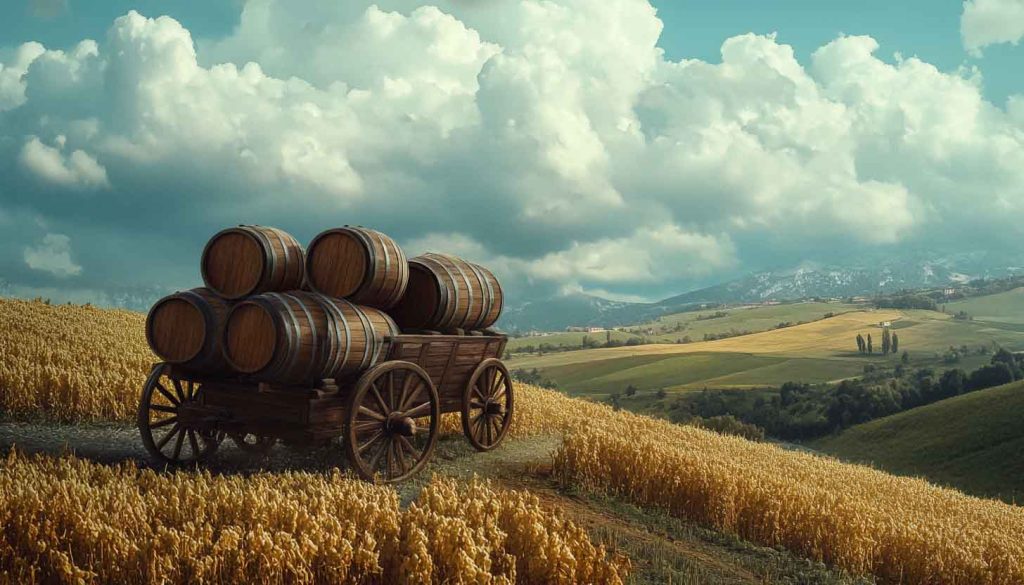
Acciughe e vie del sale: Un connubio storico
Anchovies and salt roads: A historic pairing
Perché un ingrediente principale della bagna cauda sono le acciughe, se il Piemonte non è una terra di pescatori? Durante il Medioevo, le acciughe erano trasportate lungo le “vie del sale” dalla Liguria e dalla foce del Rodano, nascoste in barili pieni di sale per sfuggire ai ladri. Questo processo le conservava perfettamente e le rendeva molto gustose, trasformandole in un ingrediente prezioso della cucina piemontese.
Why are anchovies a key ingredient in bagna cauda when Piedmont is landlocked? In the Middle Ages, anchovies were transported along the “salt roads” from Liguria and the Rhône River, hidden in barrels of salt to avoid thieves. This process preserved them beautifully and made them a prized ingredient in Piedmontese cuisine

L’acciuga vuol nuotare tre volte: nell’acqua, nell’olio, nel vino.
The anchovies want to swim three times: in water, in oil, in wine
Questo detto cattura con umorismo il viaggio dell’acciuga dal mare al piatto e, infine, all’esperienza culinaria italiana, dove cibo e vino sono inseparabili. Racchiude l’essenza della filosofia gastronomica italiana: semplicità, gusto e la gioia di condividere i pasti con gli altri.
This idiom humorously captures the anchovy’s journey from the sea to the plate and, finally, to the Italian dining experience, where food and wine are inseparable. It encapsulates the essence of Italian culinary philosophy: simplicity, flavor, and the joy of sharing meals with others.
Nell’acqua (In water): This represents the anchovy’s natural habitat in the sea, emphasizing its origin as a fish.
Nell’olio (In oil): This refers to the preservation and preparation of anchovies, which are often salted and submerged in olive oil to enhance their flavor and shelf life. It’s a nod to their culinary transformation.
Nel vino (In wine): This playful third “swim” highlights the Italian tradition of pairing food with wine. It suggests that anchovies, once prepared and enjoyed, are best accompanied by a good glass of wine, blending gastronomy with conviviality.
Preparare la bagna cauda: Un tuffo nei sapori autentici
Making bagna cauda: A dip into authentic flavors
Ingredienti (per 4 persone come antipasto):
Ingredients (serves 4 as an appetizer):
1/2 tazza di burro
3 cucchiai di olio d’oliva
1 lattina di filetti di acciughe
3 spicchi d’aglio
Peperoncino (facoltativo)
1/2 cup butter
3 tablespoons olive oil
1 can anchovy fillets
3 garlic cloves
Chili flakes (optional)
Passaggi della Preparazione
Steps for Preparation
Frullare acciughe e aglio fino a ottenere una pasta o tritarli finemente. Scaldare a fuoco basso burro, olio, aglio e acciughe finché il burro si scioglie e i sapori si amalgamano (circa 5 minuti). Servire caldo, magari in una fonduta.
Puree anchovies and garlic into a paste or finely chop. Heat butter, oil, garlic, and anchovies over low heat until the butter melts and flavors meld (about 5 minutes). Serve warm, ideally in a fondue pot.
Vegetali da intingere: Broccoli, fagiolini, ravanelli crudi, pane fresco, gamberi saltati. Altre idee includono carote, cuori di carciofi, peperoni, asparagi, zucchine, cavolfiori, indivia.
Veggies to dip: Broccoli, green beans, raw radishes, fresh bread, sautéed shrimp. Other ideas include carrots, artichoke hearts, bell peppers, asparagus, zucchini, cauliflower, endive.
Check out the Recipe on the website Giallo Zafferano

Condividere del buon cibo, come la bagna cauda, con gli amici non riguarda solo soddisfare l’appetito, ma creare momenti indimenticabili pieni di risate, connessione e tradizione. E quale modo migliore per arricchire l’esperienza se non imparando qualche parola ed espressione italiana? Dal dire “Passami le verdure!” al padroneggiare frasi come “Fare il bagno cauda”, ti tufferai a capofitto (proprio come un’acciuga) nel cuore della cultura italiana.
Sharing good food, like bagna cauda, with friends is not just about satisfying your appetite—it’s about creating unforgettable moments filled with laughter, connection, and tradition. And what better way to enrich the experience than by learning a few Italian words and expressions along the way? From saying “Passami le verdure!” (Pass me the veggies!) to mastering phrases like “Fare il bagno cauda”, you’ll be diving headfirst (just like a sardine) into the heart of Italian culture.
